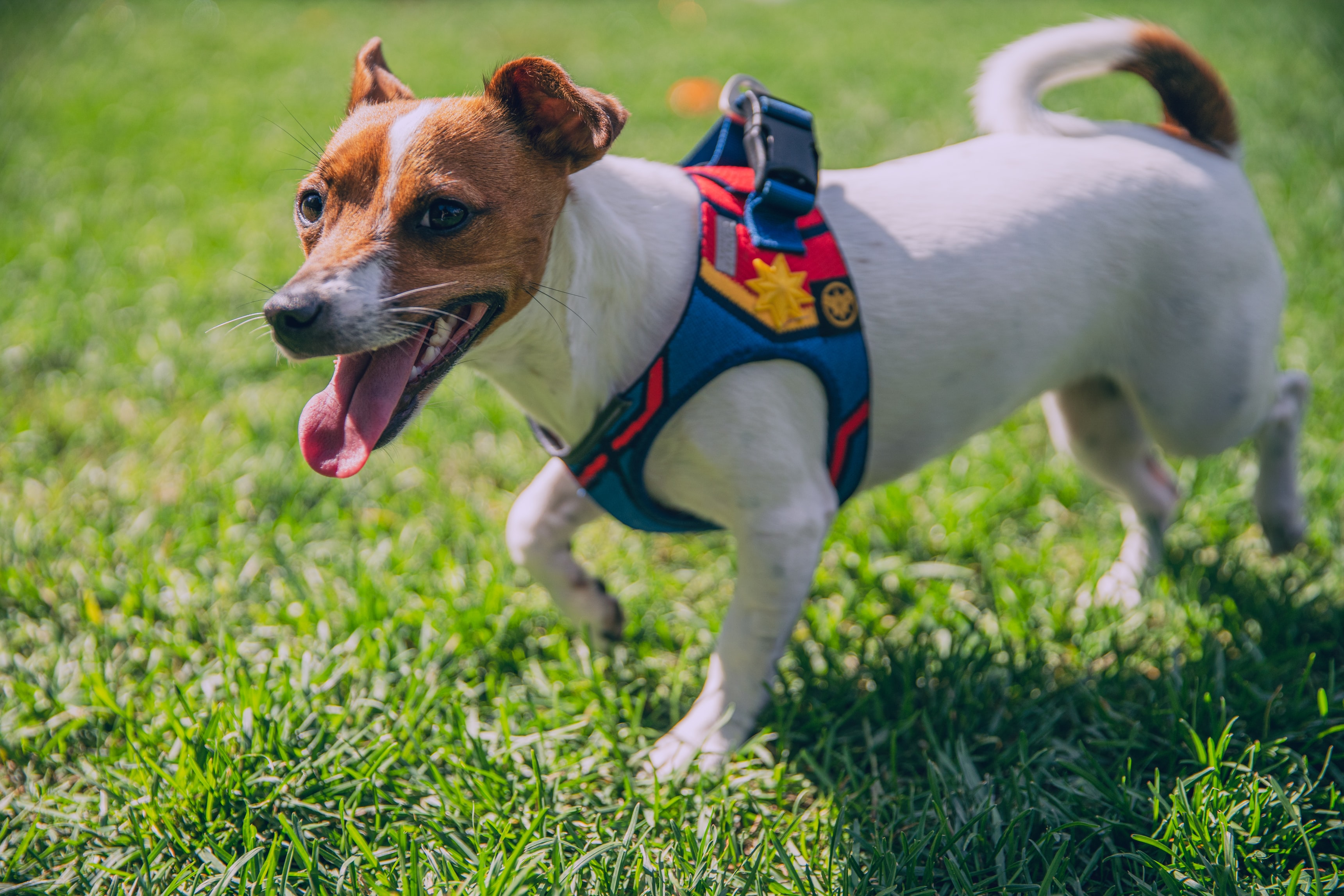Many dog owners are curious about switching to using a harness instead of just a leash on their walks. A dog harness is a great option that provides better control of your dog and puts less strain on their neck– instead, the pressure of the harness is distributed around their chest and shoulders. Harnesses can help with training your dog against pulling on a leash, and some even come with small packs so that your pup can carry their own items on hikes.
You need to ensure that you get the correct size harness for your dog. Ones that are too tight may not attach properly or can cause chafing and subsequent infections; a too loose dog harness can allow your dog to slip out of it or cause injury when it suddenly snaps against your dog when they lunge or pull. Below are some tips for correctly measuring your dog to get a suitable size harness.
Ideal Harness Tightness
So, how tight should a harness actually be? When trying on different harnesses and tightening or loosening the straps, you should follow the two-finger rule: two fingers should fit snugly between the strap and your dog’s body, but you should not be able to flip your hand over while your fingers are under the strap. This provides enough room for your dog to breathe and move around comfortably but will not allow them to slip out of it accidentally.
Taking the Measurements
In many cases, the dog harness will be packaged to prevent you from trying it on your dog in the store. Instead, a range of measurements will be given so that you can choose the right size.
- Neck Girth: “Girth” refers to the circumference of your dog’s neck. Use a flexible measuring tape when taking this measurement. Place the tape around where your dog’s collar usually sits, and be sure to account for the two-finger rule when taking the measurement. You can expect that small breed neck girths generally range from 6 – 13”; medium breeds are 13 – 19”; and large breeds are about 19” and higher.
- Chest Girth: When taking a chest girth measurement, circle the tape around the widest part of their ribcage–behind the front legs and over the back.
- Body Length:Many harnesses can be properly sized with just the neck and chest girth, but others also give size ranges for body length. When measuring your dog’s body length, you measure from the base of their neck (where it meets their back) down to the base of their tail.
Fitting the Dog Harness
Once you’ve selected your harness and found the correct size, you will need to tighten or loosen the straps so that they fit properly. Remember to use the two-finger rule when fitting it, and then you’re good to go. On your first few walks with the harness, pay attention to your pup and make sure the harness still fits well as they move in it. Check for any spots that are getting rubbed or chafed, and adjust the straps if necessary.
A dog harness can be helpful in training your dog if he feels more comfortable wearing it. For more training tips and tricks, visit our blog.
Gulf Coast K9 Dog Training is a professional dog training and obedience school serving Sarasota and Manatee County.





